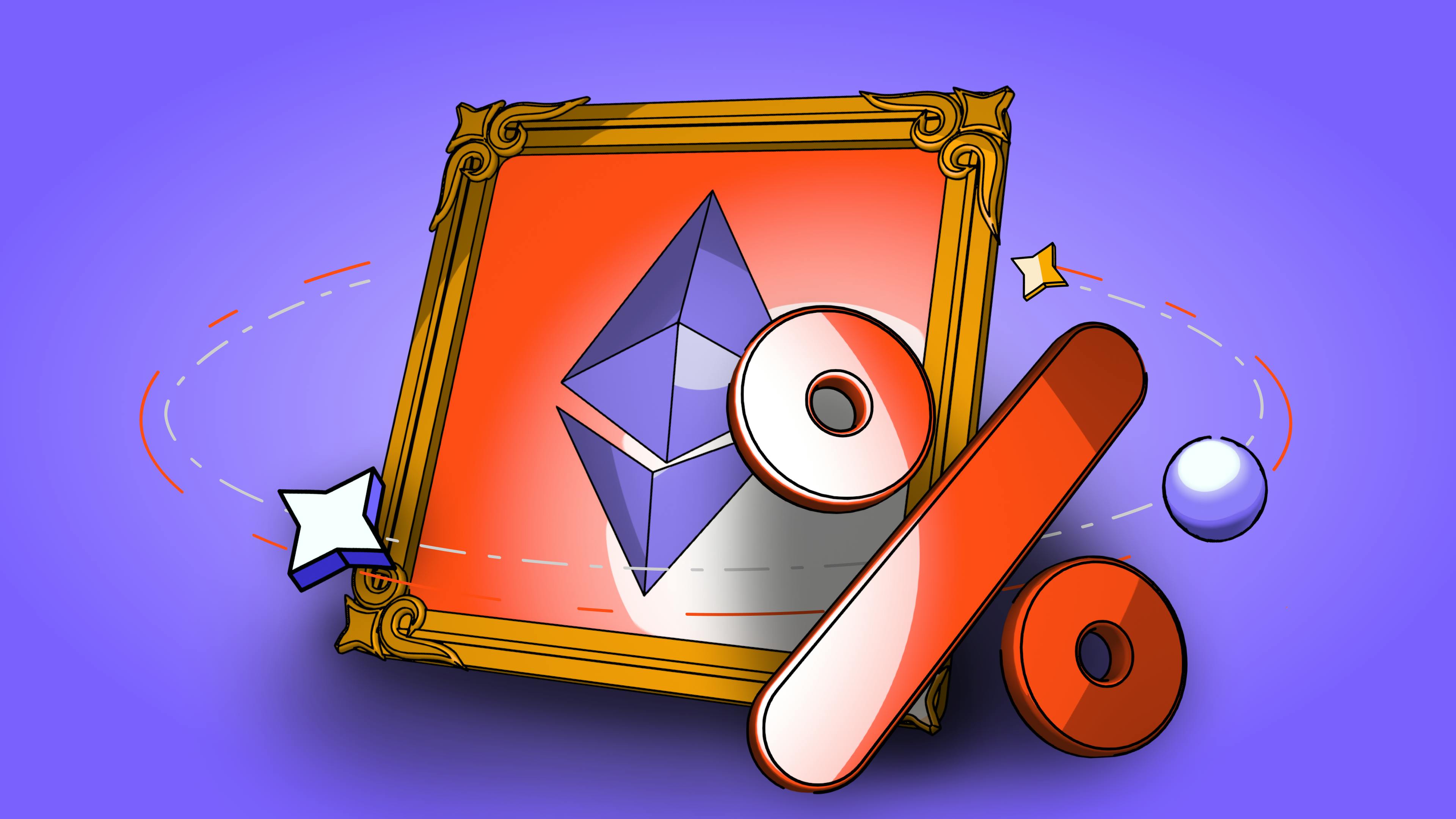Fractional Ownership of NFTs and Its Market Implications
December 5, 2025

by Coinmetro Editorial Team
December 5, 2025
The concept of fractional ownership is not new, but its application to the world of non-fungible tokens (NFTs) is a recent development. Fractional ownership allows multiple individuals to own a share of a digital asset, making it more accessible and affordable. This approach to NFT ownership is reshaping the digital asset market, making it more inclusive and dynamic. By lowering the entry barriers, fractional NFTs are broadening the market for digital assets and paving the way for a more diversified investment landscape.
Fractional ownership in the NFT space refers to the division of a single NFT into multiple parts or shares, which can then be owned by different individuals. This is achieved through smart contracts on the blockchain, which ensure that the NFT's ownership is divided securely and transparently. Each share represents a portion of the ownership in the NFT, and shareholders can freely buy, sell, or trade their shares just like any other asset.
The rise of fractional NFTs has been driven by the high value of certain digital assets, making them out of reach for the average investor. By enabling fractional ownership, more people can participate in the NFT market, which has led to increased accessibility and liquidity. This has also opened up new opportunities for investors and collectors to engage with high-value NFTs without the need for significant upfront capital. Additionally, it has spurred innovation within the digital asset markets, as platforms and creators explore new ways to utilize fractional ownership to benefit both creators and collectors.
Fractional NFT ownership divides a single NFT into many parts, allowing multiple people to own a piece of it. This process is managed through smart contracts on a blockchain. Smart contracts are self-executing contracts with the terms of the agreement directly written into lines of code. They ensure that the division and ownership of the NFT are secure, transparent, and tamper-proof.
When an NFT is made fractional, a predetermined number of shares are created. These shares are then sold, and each shareholder owns a fraction of the NFT. Shareholders can trade their shares on secondary markets, similar to trading stocks. If the value of the NFT increases, the value of the shares does as well.
Several platforms have emerged to facilitate fractional ownership of NFTs, each offering different features and communities. Some notable platforms include:
Fractional.art: A platform that allows NFT owners to mint fractional ownership tokens. It provides a marketplace for these tokens, enabling users to buy and sell shares of various NFTs.
Niftex: Offers a similar service, allowing users to create and trade shares of NFTs. It focuses on creating liquidity and enabling smaller investors to participate in the NFT market.
These platforms play a pivotal role in the fractional NFT space by providing the infrastructure needed for fractional ownership to take place. They offer tools for NFT owners to fractionalize their assets and for investors to buy, sell, and trade shares in NFTs, thus democratizing access to the NFT market.
One of the most significant benefits of fractional NFT ownership is its ability to make high-value NFTs more accessible. Before fractional ownership, only those with considerable financial resources could afford to purchase high-value NFTs. By allowing multiple people to own portions of an NFT, the entry cost is significantly reduced. This democratization means that more individuals can participate in the ownership and investment in valuable digital art and collectibles, broadening the market and creating a more inclusive environment. Similarly, the tokenization of fractional real estate opens up investment opportunities in high-value properties to a broader audience, significantly lowering the barrier to entry and fostering a more inclusive investment landscape.
Fractional ownership also enhances liquidity in the NFT market. Liquidity refers to the ease with which an asset can be bought or sold in the market without affecting its price. High-value NFTs, being expensive and unique, often suffer from low liquidity since finding a buyer willing to pay a high price can take time. Fractional ownership solves this by allowing shares of an NFT to be bought and sold more readily, increasing the asset's liquidity. This not only benefits sellers, who can more easily find buyers for their shares but also makes the market more attractive to investors who prefer assets that can be quickly and easily traded.
While fractional ownership of NFTs opens new doors for investors and collectors, it also brings its own set of challenges and considerations, especially in terms of legal and regulatory compliance and ensuring the security and trustworthiness of transactions.
The legal and regulatory framework surrounding fractional NFT ownership is still evolving. One of the main challenges is determining how these assets fit into existing financial regulations. Different jurisdictions may have varying rules regarding securities, taxation, and digital assets, complicating compliance for platforms and investors. Ensuring that fractional NFTs are issued, traded, and managed in a way that complies with these regulations is crucial to maintaining a legitimate and stable market.
Security and trust are paramount in the world of NFTs, where the value of digital assets is often subject to speculation and market volatility. For fractional NFT ownership to be viable and sustainable, platforms and stakeholders must prioritize robust security measures. This includes protecting against hacks, ensuring the integrity of smart contracts, and verifying the authenticity and ownership history of NFTs being fractionalized. Additionally, clear and transparent communication with investors about how their assets are managed and protected is essential for building trust in this new market model.
These challenges highlight the need for ongoing development and adaptation within the fractional NFT space. As the market matures, addressing these considerations will be vital for the long-term success and stability of fractional NFT ownership.
The concept of fractional NFT ownership is reshaping the NFT market in several key ways, particularly in terms of valuation, pricing, and future market dynamics, as detailed in the sections below.
Fractional ownership can affect the valuation and pricing of NFTs. By enabling more people to invest in high-value NFTs, demand for these digital assets can increase. This increased demand, combined with a more accessible market, can lead to higher valuations and prices for NFTs, especially rare or highly sought-after ones. The ability to buy a share of an NFT makes it not just an exclusive item for the wealthy but an accessible investment for the broader public. As a result, we may see a shift in how NFTs are valued, with market dynamics becoming a more significant factor. However, over time, as more high-value NFTs become available for fractional ownership and the market becomes more saturated, prices may stabilize or even decrease for certain assets.
Looking ahead, the introduction of fractional ownership is likely to introduce new dynamics to the NFT market:
Broader participation: With lowered barriers to entry, a more diverse group of investors will likely participate in the NFT market, contributing to its growth and stability.
Increased liquidity: Fractional ownership enhances the liquidity of NFTs, making them more attractive to investors who prefer assets that can be quickly and easily traded. This could attract more traditional investors to the NFT space.
Innovation in NFT utilities: As fractional ownership becomes more common, we may see innovation in how NFTs are used and traded. For instance, NFTs could be used more frequently as collateral in decentralized finance (DeFi) applications or integrated into digital and physical experiences in novel ways.
As we look ahead to the future of fractional NFT ownership, it's evident that this innovative approach to digital asset investment is positioned to play a significant role in shaping the landscape of the NFT market.
The adoption of fractional ownership represents a key innovation in the NFT space, offering greater accessibility and democratizing access to high-value digital assets. However, along with this innovation come challenges, such as legal and regulatory complexities, security concerns, and market dynamics. To realize the full potential of fractional NFT ownership, it's essential for platforms and stakeholders to navigate these challenges effectively. This requires robust legal frameworks, stringent security measures, and proactive market strategies to ensure the integrity and sustainability of the fractional NFT market.
At its core, fractional ownership is about democratizing access to digital assets, making investment opportunities available to a broader audience. By breaking down the barriers to entry, fractional NFT ownership empowers individuals to participate in the digital economy, regardless of their financial status or background. This democratization of access not only expands the pool of potential investors but also fosters diversity and inclusivity within the digital asset space.
Looking forward, fractional ownership has the potential to revolutionize how we perceive and interact with digital assets and beyond. By embracing innovation while addressing challenges, the future of fractional NFT ownership and fractional tokenization in general promises to be a dynamic and transformative force in the world of digital finance.
Join the Coinmetro community on Discord and Telegram, where forward-thinking traders and investors gather to share insights, explore new opportunities, and dive deep into the world of cryptocurrencies. Should you need any help, feel free to reach out to our world-class Customer Support Team via 24/7 live chat or email at hello@coinmetro.com.
To become a Coinmetro user today, Sign Up now, or head to our new Exchange if you are already registered and experience our premium trading platform.
Tags
Related Articles

Regulatory Sandboxes: Fostering Crypto Innovation Within Legal Frameworks
The cryptocurrency industry’s fast rise fuels an important debate. Innovation aims to transform finance, enhancing speed and access. Yet, regulators…
5m

Crypto Options Trading: Strategies and Market Insights
Cryptocurrency markets have rapidly expanded beyond simple buying and selling. One of the most significant developments has been the rise of…
6m

The Rise of Social-Fi: Blending Social Media with Decentralized Finance
In recent years, social media and finance have started to merge, creating Social-Fi. This concept blends the engagement of social platforms with…
6m

DeFi Insurance Platforms to Watch in 2024
Decentralized Finance (DeFi) insurance addresses the growing need for insurance against hacks, smart contract failures, and other DeFi-related risks.…
7m